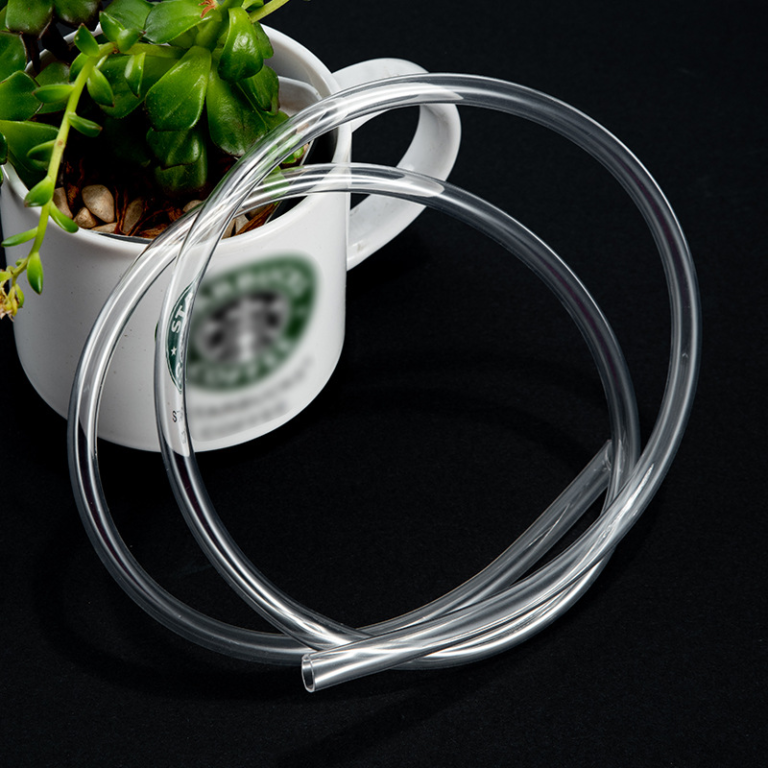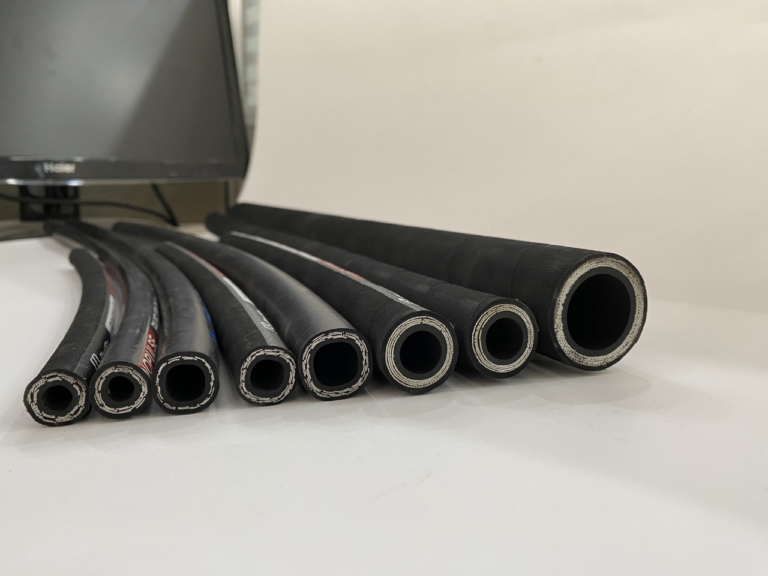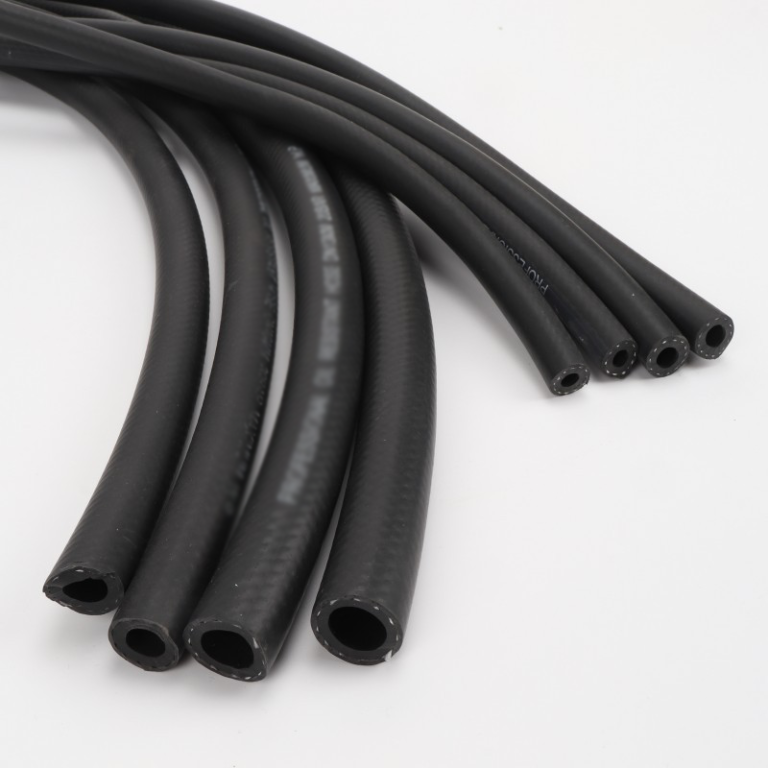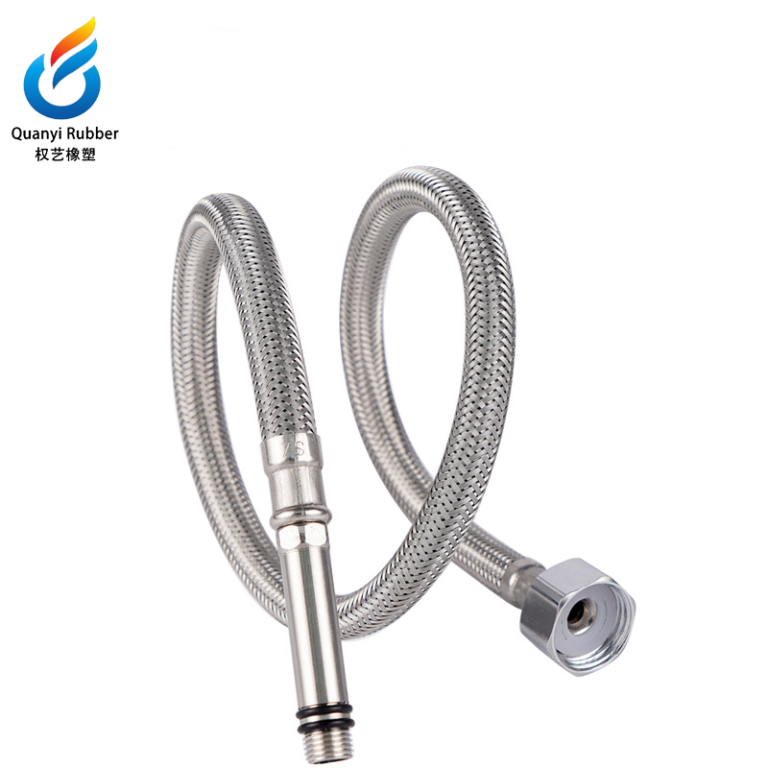Manufacturing process of rubber oil-resistant pipe: from raw materials to finished products
The manufacture of rubber oil-resistant pipes is a complex process involving multiple processes, each of which plays a vital role in the quality and performance of the final product.
1. Raw material preparation
The first step in manufacturing rubber oil-resistant pipes is to prepare raw materials. As mentioned above, rubber is the main raw material, among which nitrile rubber, fluororubber, etc. are selected according to oil resistance requirements. In the procurement of raw materials, it is necessary to strictly control the quality of rubber and check its purity, molecular weight distribution and other parameters. Rubber with high purity and reasonable molecular weight distribution can ensure better physical and chemical properties of the oil pipe.
In addition to rubber, reinforcing materials are also one of the important raw materials. For rubber oil-resistant pipes reinforced with steel wire braids, the quality of steel wire directly affects the pressure resistance of the oil pipe. High-quality steel wire has high strength, high toughness and good surface quality. Before use, the steel wire needs to be pretreated, such as cleaning, phosphating, etc., to enhance the bonding between the steel wire and the rubber. If there is oil or impurities on the surface of the steel wire, the bonding between the steel wire and the rubber will not be strong, and stratification is likely to occur during use, affecting the overall performance of the oil pipe.
The preparation of additives should not be ignored. Antioxidants, plasticizers and other additives need to be weighed and mixed according to the precise formula ratio. The amount and mixing uniformity of these additives have a direct impact on the processing properties of the rubber and the final oil resistance, aging resistance and other properties.
2. Mixing
Mixing is the process of mixing rubber, additives and other auxiliary materials evenly. In the mixer, the rubber is first softened, and then the additives and other materials are added in a certain order. This process requires precise control of parameters such as temperature, time and speed.
For example, when mixing nitrile rubber, too high a temperature may cause the rubber to vulcanize prematurely, affecting the subsequent processing performance. If the time is too short, the additives may not be fully dispersed in the rubber, resulting in uneven rubber properties. The rubber after mixing is called mixed rubber, which should have good plasticity and uniform performance, laying a good foundation for the subsequent molding process.
3. Inner rubber layer molding
The inner rubber layer is the part of the rubber oil-resistant pipe that is in direct contact with the oil, and its molding quality is crucial. The molding of the inner rubber layer usually adopts the extrusion process. The rubber compound is added through the hopper of the extruder. Under the push of the screw, the rubber compound is extruded through a die with a specific shape to form a tubular inner rubber layer.
During the extrusion process, parameters such as extrusion speed, temperature and pressure need to be controlled. Extrusion speed that is too fast may cause the surface of the inner rubber layer to be rough and uneven in size; excessive temperature may cause the rubber to soften excessively, affecting the physical properties of the inner rubber layer; insufficient pressure may not ensure the density of the inner rubber layer, thereby affecting its oil resistance. The inner rubber layer after extrusion needs to be cooled and shaped to keep its shape stable.
4. Reinforcement layer production
The production method of the reinforcement layer varies depending on the reinforcement material. For rubber oil-resistant pipes reinforced with steel wire braiding, the steel wire braiding process is the key. First, the pretreated steel wire is braided by a braiding machine according to a certain braiding angle and density. The braiding angle and density directly affect the pressure resistance and flexibility of the oil pipe.
A suitable braiding angle can make the steel wire evenly stressed when under pressure and improve the compressive strength of the oil pipe. Too high a braiding density may make the oil pipe too rigid, which is not conducive to installation and use; while too low a braiding density cannot provide sufficient pressure resistance. During the braiding process, it is also necessary to pay attention to the tension control of the steel wire to ensure the uniformity of the braiding.
5. Forming and vulcanization of the outer rubber layer
The outer rubber layer is similar to the inner rubber layer and is also completed through an extrusion process. After the outer rubber layer is extruded, it covers the outside of the reinforcement layer and the inner rubber layer.
Vulcanization is a key process in the manufacture of rubber oil-resistant pipes. The vulcanization process is to cross-link the rubber molecular chains through chemical bonds under certain temperature, pressure and time conditions, thereby improving the physical properties and chemical stability of the rubber. The vulcanization parameters need to be precisely adjusted according to the type of rubber and the requirements of the product. For rubber oil-resistant pipes, insufficient vulcanization will result in insufficient hardness and poor oil resistance of the rubber; excessive vulcanization will make the rubber brittle and reduce the flexibility and service life of the oil pipe.
After the vulcanization is completed, the rubber oil-resistant pipe needs to go through a series of post-processing processes, such as trimming and inspection. Trimming is to remove excess material so that the size of the oil pipe meets the requirements. The inspection includes appearance inspection, pressure resistance test, oil resistance test, etc. Only rubber oil-resistant pipes that pass strict inspection can enter the market as qualified products.






